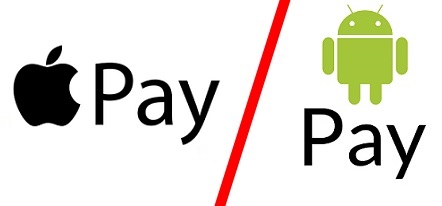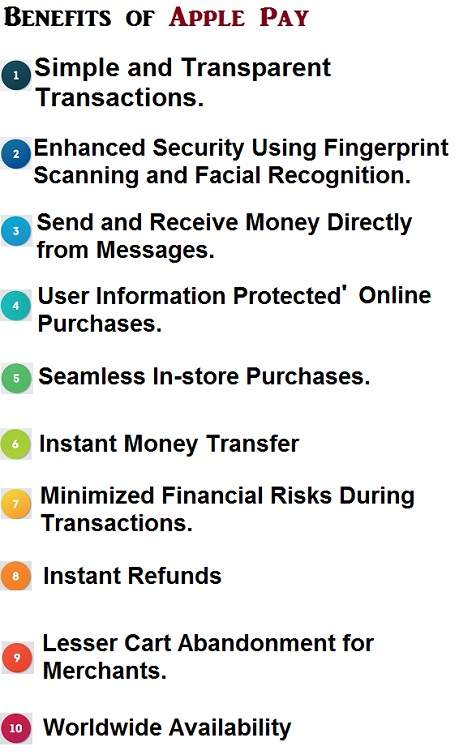
The days of carrying wallets filled with credit cards are gradually coming to an end.
These days, you can not only buy your favorite products online, but also can book an airline ticket or access various financial services through any smart phone.
Which means, days of reckoning for credit and debit cards have already begun and soon would be treated the same way as plastic discarded in the ocean.
The former is a product of Google while the latter represents the esteemed Apple brand.
Despite being in the same vertical, these two mobile wallet providers, differ in so many ways, as follows…

Availability
With so many new technologies emerging in the digital market, Apple Pay came to life in 2014.
At the time, Apple was coming from a major hacking incidence that left many brands vulnerable.
So far it is available only in the developed countries, and a select few developing markets such as China and India.
On the other hand, Google has been in the market a lot longer than Apple.
Therefore, many people are aware of what Android Pay is, it’s functionalities and features.
Unlike Apple Pay, all one needs is an Android device to avoid long paying queues.

Compatibility
Typically, Apple Pay is restricted to Apple devices like iPhones but since it is a technical issue, the future is promising for its progress.
Not all iPhones are compatible with Apple Pay because they lack NFC which supports digital trading.
However, iPhone 6, 6 plus, 6S, 6S plus, and the latest iPhone SE are equipped with the chip responsible for mobile transactions.
Though iPad Air 2 was discovered to have an NFC chip, it lacked the peripheral antennas to make the chip work.
Compared to Apple Pay, Android pay is compatible with any Android with NFC and be able to run Android 4.4 KitKat.
The number of devices supported by Android is countless including cheap phones and tablets like the Nexus 7.
All things considered, Android Pay is more exposed than Apple Pay but the tables might turn because the two brands are neck to neck competitors.
Banks and Shops That Accept Them
According to statistics, both digital providers can be used in various stores in the US and UK.
In London, they are supported where contactless payments are required, basically everywhere, and Apple has the upper hand in making deals than Google because Apple Pay has been on the market for a lot longer.
Apple Pay, on the other hand, is an upgraded version of Apple Wallet, which is the preferred choice of payment for millions of iPhone users.
Several companies accept Android Pay including Uber, Expedia, Domino’s, Groupon, Coca-Cola, Subway, and American Eagles among others.
While most banks accept both systems, Co-operative and Barclays bank have relied on Apple Pay a lot more.
However, the two banks are considering using Android Pay since they have functional branches in developing and under developed regions (here, iPhones are extremely expensive and considered as a premium product for the elites).
Apple Pay has penetrated many financial institutions and their cards while Android is working on adding more each day.

Security
When it comes to financial issues, security is always at the forefront.
Many people want to know whether the information retrieved from their bank card is safe.
With Android Pay, your actual credit card information is safely hidden in Google cloud while you use a virtual account number that does not display any personal information.
In case one’s phone is lost, stolen or damaged, alert your bank immediately or wipe out all your financial data before replacing the device.
Security is enhanced with finger print scanners in both systems but Apple has an upper hand because many Androids lack the bio-level of security.
The rapid growth of online retail has enabled mobile money providers to deliver fast services within a short time period.
Banks are able to de-congest their institutions by adopting mobile transactions for customers.
The competition between Google and Apple has enabled smooth transaction within stores and organizations.
The main challenge lies in people’s beliefs that traditional contact methods are safer.
They find comfort in swiping credit cards and paying cash.
With time, the burden of trying to figure out where one kept his/her card will be outweighed by the need to walk around without handbags or wallet.
The rate at which one forgets a phone is less than that of an ATM card. Between Apple and Android Pay, there is no winner despite their differences.
They are wireless payments supported by the same technology that human beings are implementing in their daily lives.
Order and pay for pizza at the comfort of your home and theater fans can pay for tickets in advance to avoid missing an upcoming action movie or animation.
